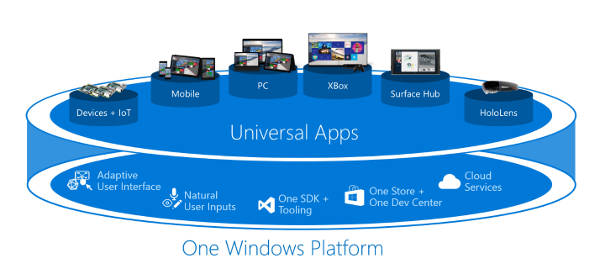| Microsoft Gives Up On UWP |
| Written by Mike James | |||
| Monday, 13 May 2019 | |||
|
You can't expect a clear statement from Microsoft on discontinuing any software, but it looks as if the push to make us all move to UWP apps is over. The desktop future is classic Win32 and .NET.
Microsoft lost its way when it attempted to make Windows 8 a mobile operating system. To make it happen everything past had to be discouraged and a new way to do things encouraged. The new technology was based on the old - COM - but repackaged in an easy to use form. Makes you wonder why it wasn't easier to use from the word go! The new technology served two purposes - first it made .NET and Win32 into legacy technologies and second it put the C++ group within Microsoft in the driving seat. The way that Microsoft encouraged us to take on the new technology - initially called WinRT/Metro and eventually UWP - was by making it the only platform moving forward. If you wanted to write a program for a Windows phone it had to be UWP. If you wanted to put your app in the (then) new Windows Store it had to be UWP. The future was UWP and programmers had better get on board. Of course, the future wasn't UWP because Microsoft eventually gave up on Windows Phone and it even made Windows 10 less radical and more accepting of alternatives to UWP. After Windows Phone was cancelled, UWP looked like an increasingly pointless and unattractive technology. Why write a UWP app when it would only run on Windows 10? The final nail in the coffin was probably Progressive Web Apps (PWA) - apps that would work on the desktop, web browser and hence any mobile device. What use is UWP now? Microsoft always has a problem admitting that it went down the wrong road. It rarely does a Google and suddenly declares the shuttering of some service or app. In the case of UWP, simply giving up on it would isolate the few developers who did take to it. It would leave users with apps that were no longer supported that they paid money for. Most of all it would leave Microsoft with apps that had been converted to UWP - Skype, Calculator and so on - looking silly.
So not a death sentence, more another reason not to exist. In a recent blog post, Kevin Gallo, Corporate Vice President of the Windows Developer Platform, announced that the features that made UWP special were going to be made available to any Win32 or .NET app. Specifically, WinForms, WPF or native Win32 apps can now access the range of controls previously only available to UWP apps. The so-called "XAML Islands" give access to the WinUI library, which was recently open sourced. So now UWP apps have no advantages and have essentially been relegated to just another flavour of Win32 apps. Add this to the recent announcement that standard Windows apps can now make use of WinRT features without the need to be in the Windows Store, and there is no longer be the division between non-UWP and UWP apps - there will just be Windows apps. To confirm all of this Mary Jo Foley interviewed Gallo who said: "By the time we are done, everything will just be called 'Windows apps'. We're not quite there yet." Despite the fact that Microsoft claims that UWP isn't dead and neither is the Windows Store, it seems in all likelihood that practically speaking they are. So where does it leave us? There are a number of UWP apps that could be so much better if they were just Windows's apps. Skype, in particular, is terrible from the user perspective and there are many of us who gave up using it, just because as a UWP app it was so poor at maintaining its state. If you have created a UWP app then there is no really hurry to give up on it - just migrate it as needed. Users on the other hand might well notice that UWP apps start to vanish. What isn't so easy to undo is the damage that this whole escapade has done to Microsoft and its developer community. Do you know which technology to use for a new project? Should it be .NET, WPF, WinForms, bare Win32 - what is legacy and what has a future. Perhaps the best thing to do is to leave desktop apps alone and write PWA apps, using the recently announced React Native for Windows, but this is not an answer for all problems. Some programs need to be full desktop apps. It probably isn't possible for Microsoft to roll back the clock and make .NET the central pillar of its development strategy, but things would look much better if it could. I really do think that we will look back on this as the lost decade of Microsoft's developers - developers, developers...
More InformationDeveloping people-centered experiences with Microsoft 365 Related ArticlesAfter Sinofsky - All Change For Windows 8? How Microsoft Could Have Done Metro Dumping .NET - Microsoft's Madness Windows 8 - The Desktop Destroyer Microsoft's WP7 push - developers, developers, developers To be informed about new articles on I Programmer, sign up for our weekly newsletter, subscribe to the RSS feed and follow us on Twitter, Facebook or Linkedin.
Comments
or email your comment to: comments@i-programmer.info
|
|||
| Last Updated ( Tuesday, 14 May 2019 ) |





